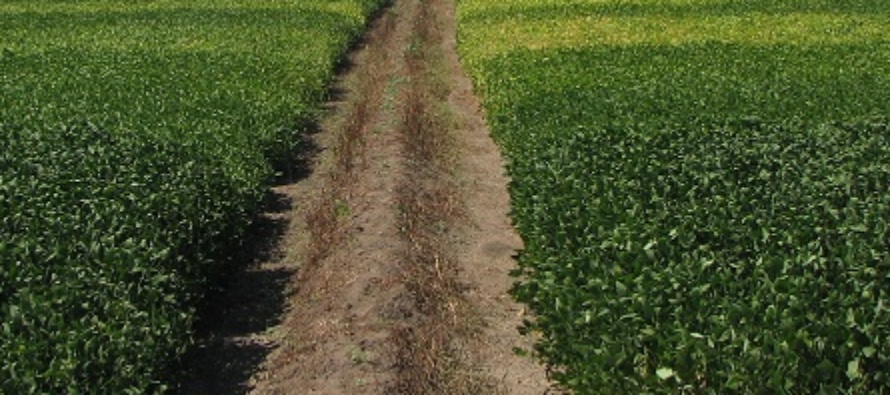Soybean Flood vs Furrow Irrigation Cost

Related Articles
- 2010 Soybean And Corn Variety Trial Data 3
- 2010 Row Crop Short Course Video Links 0
- March Ag Supply and Demand Report Recap 0
Latest Tweets
The Irrigation Team at MSU was requested in 2016 to investigate the effects of flood and furrow irrigation by interested farmers. Traditionally, many rice farmers chose to flood irrigate their soybeans. Rice farmers were accustom to pulling levees in rice fields, so it was a natural fit to irrigate soybeans in the same fashion. With the decreasing water levels in the Mississippi Alluvial River Valley aquifer and state regulators responding by requiring minimum levels of irrigation water use efficiency practices, the Irrigation Team was requested to investigate furrow and flood irrigated soybeans here in the Delta.
During the summer of 2016 and 2017, sixteen Delta farms were chosen to participate in a study to compare the water use and yield of furrow and flood irrigated soybean fields. Each farmer was requested to furnish two fields, one being furrow irrigated and one flood irrigated. All fields in this study were land-formed clay soils.The fields were required to be side by side or in relatively close proximity with the same planting date and variety. All cultural practices were to be preformed similar. The MSU Researcher installed Watermark moisture sensors in both fields and maintained a record of soil moisture levels. The MSU Research made the irrigation decision on the furrow irrigated field while the farmer made the decision on the flood irrigated field. Irrigation water meters were installed in both fields to measure water use. Combine yield monitors provided the yield results.
Surprisingly water use in both system were similar. This information tells us farmers are doing an extremely good job managing water use in their flood irrigated fields. Most farmers implementing flood irrigation have been using this practice for years, mastering when and how to terminate irrigation minimizing runoff. Flood irrigated yields averaged across locations resulted in a 5.4 bushel decrease over the furrow irrigated fields. The number of levees, well capacity, saturation, and drainage all played a role in this yield reduction. Farmers continuing to flood irrigate should play close attention to well capacity and field size as well as drainage, avoiding soil saturation on the top and bottom sides of the field.
The economics are as presented. Total specified expenses for the furrow irrigated system were$562.43 which reflected the additional cost of the poly tubing, and RISER program equipment.(surge valves, sensors, data loggers) Total specified expenses for the flood irrigated system were $543.23. Net income at $10.54 (March 2018) soybean prices were $213.84 for the furrow irrigation system and $176.02 flood irrigation system. While your farm numbers may vary, in this study the furrow system netted an $37.82 advantage over the flood system. A third year of data will be collected in 2018.




Let me tell You a sad story ! There are no comments yet, but You can be first one to comment this article.
Write a comment